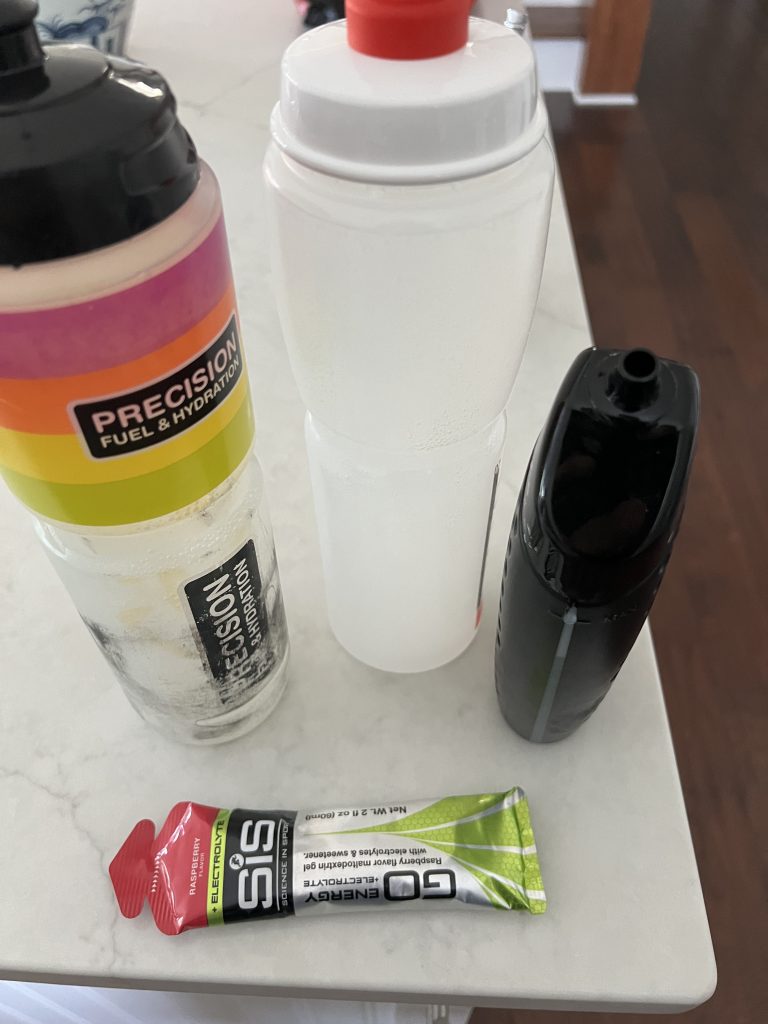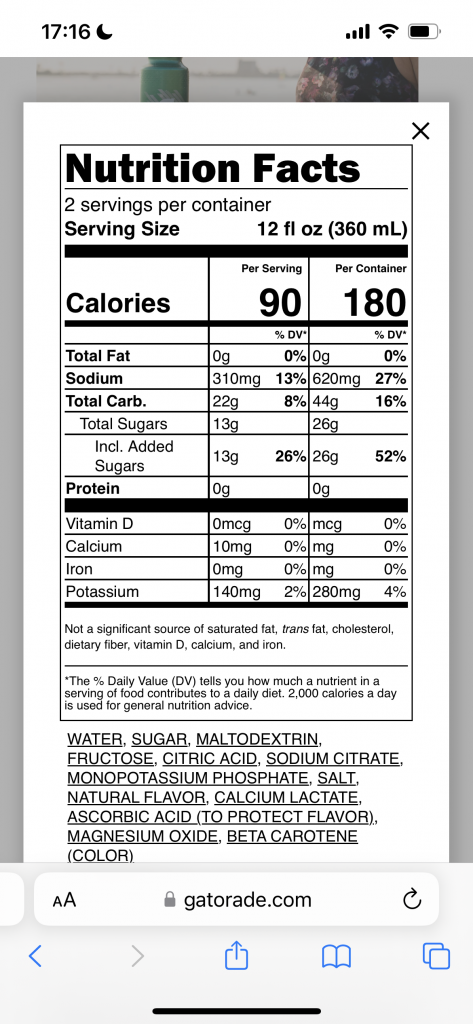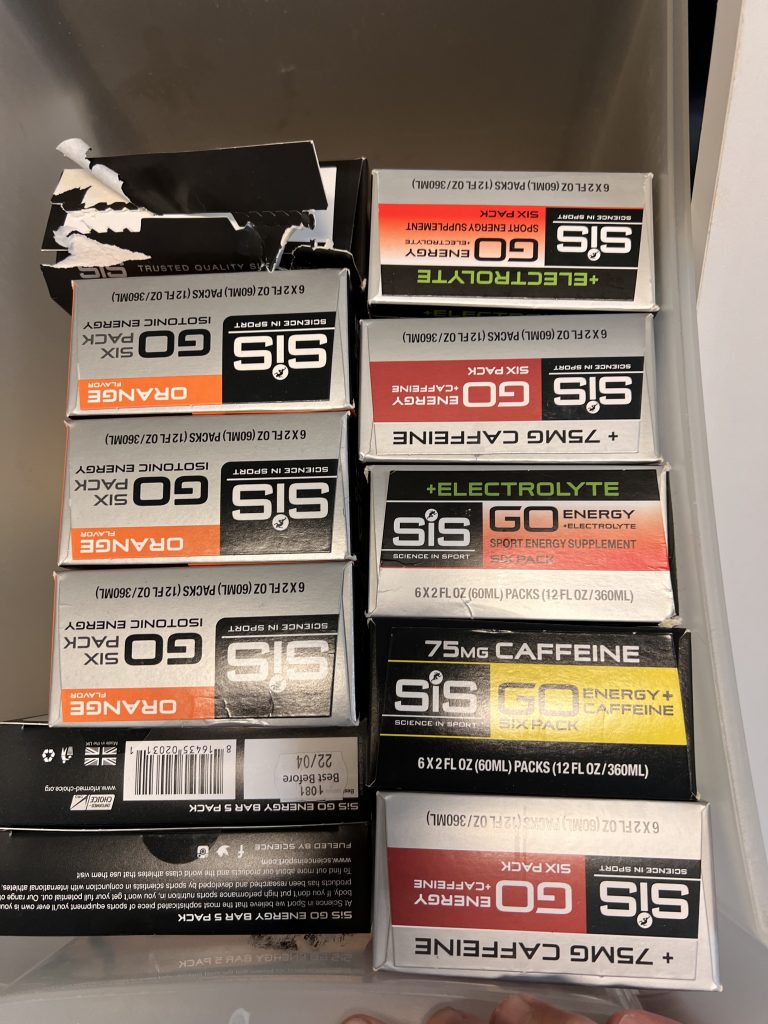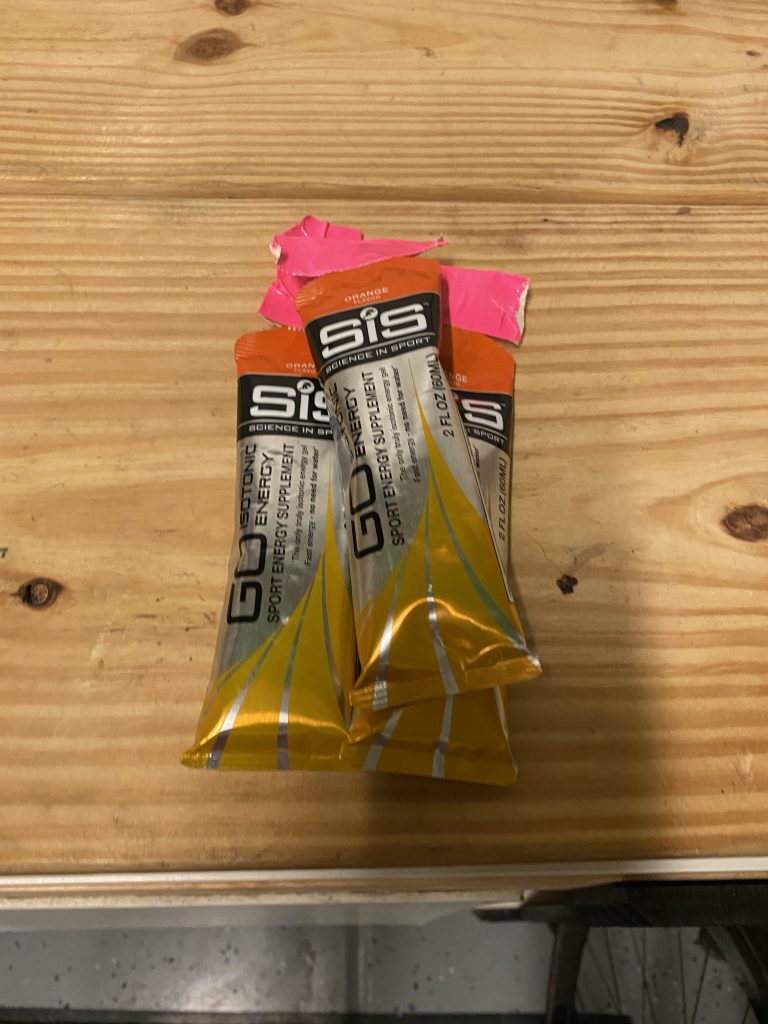



There are a ton of different endurance fuels on the market. Gels, Gu’s, Chews and Powders make up the majority of the form factors, but ultimately you can make many of them at home, for a fraction of the cost. In terms of efficacy, the DIY versions is identical, if not better, due to knowing the exact ingredients and their source. After spending way too much money buying, I decided to mix my own allowing me to customize the ratios of ingredients for my specific needs.
The primary fuel source for endurance athletes (exercise lasting over 1.5 to 2 hours) is Carbohydrates and the “purest” form of CHO is Sugar. Recent research shows that the human body can absorb between 60 – 90g of Carbohydrates per hour. Traditionally this was thought to be much lower (around 60g), but when splitting up different fuel types into fructose and glucose, it allows a variety of intestine transporters to absorb the carbs in parallel.
The primary ingredients in commercial products include Sucrose, Maltodextrin, Fructose, Glucose and Electrolytes – and in some ratio or combination. Electrolytes and sodium specifically is on the list and seems to be the one element in all commercial products which is so widely varied. While it’s a key component to hydration and primarily lost when sweating, the sweat rate and tolerability of sodium is very unique to each individual. The average sodium to sweat concentration is around 950mg/L and varies from 250mg/L to 3,000mg/L. Sodium is also a key element for gut comfort and in the wrong amount can cause major discomfort, too little and you can get dehydrated, or fall into a state of hyponatremia. So in saying all of this, I sometimes mix my sodium into my fuel (on slightly shorter efforts) or separate the two elements into Fuel and Hydration.
The benefits of separating the two components centers around the fact that if it is cold or you are not sweating as much, subsequently you don’t need to drink as much or replace as many electrolytes. But you probably still need to be fueling at your planned intake rate. Likewise if your stomach is upset or you don’t feel like eating, you could still consume your water & electrolytes and replace any lost from sweating. The drawbacks to splitting up the 2 components (Nutrition and Hydration) is that you need two separate bottles or containers for each, making it slightly more logistically challenging. Having both components in a single bottle, makes it very easy to refuel at a rest stop or personal needs stop.
After doing a sweat test, I know I sweat at around 970mg Sodium per Liter, and anywhere from 900mg (Cool weather) to 1.5L per hour (Humid weather) and while I don’t need to replace all of the sodium, I do my best to get close, likewise with water, I generally try to replace 60 – 70% of my anticipated loss rate.
After saying all that here are my requirements, sources and a few recipes:
Here are my current “requirements” for longer efforts in 75 degree weather:
5+ Hour Cycling Event: 90g – 110g of CHO per Hour, ~ 900mg of Sodium per Hour, ~ 900ml of Water per Hour
Marathon Event: 50 – 70g of CHO per Hour, 250mg Sodium per Hour, ~ 250ml of Water per Hour
In some events I mix my fuel with water, others I have it a separate bottle, both work equally as well for me, and YMMV.
DIY Powder recipe:
500g of DIY Gel in a 1:08 ratio:
260g Maltodextrin
220g Fructose
Optional: 22g Sodium Citrate (~4900mg) – this is specific to my sweat rate!
FYI: Sodium Citrate is +- 23% sodium. So 4g +- 930mg sodium (233mg per 1g) Ref
To convert this recipe to a thicker, gel like substance (a more compact form) to avoid having to dilute it with water, I simply add the ingredients to +- 50% of the total weight into boiling water, reduce the heat low and stir until all the powder has dissolved.
You must be logged in to post a comment.